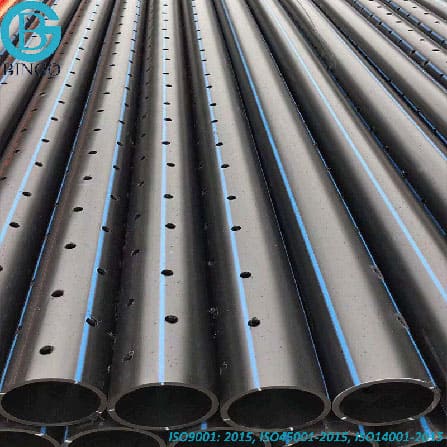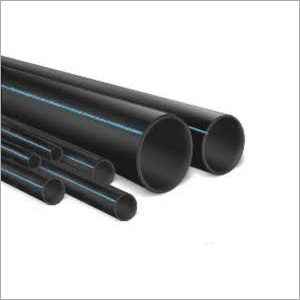American Plastics HDPE Pipe for Oilfield: Preferred in the Oilfield
Wiki Article
The Vital Actions for Effective Setup of HDPE Pipeline in Your Following Task
Successful installment of HDPE pipeline requires careful planning and execution. Secret actions consist of examining project demands, preparing the site, and choosing proper joining methods. Each stage plays an essential role in guaranteeing the integrity and efficiency of the pipeline. Recognizing these important actions can considerably influence the overall success of the task - American Plastics HDPE Pipe for Oilfield. Nevertheless, the nuances of each step may hold the trick to getting rid of common challenges dealt with throughout installationUnderstanding the Perks of HDPE Pipeline
High-density polyethylene (HDPE) pipe uses numerous advantages that make it a preferred option for various applications. Its high resistance to deterioration and chemicals guarantees longevity in requiring settings, significantly prolonging the life expectancy of setups. Furthermore, HDPE's flexibility enables simpler setup, specifically in difficult terrains, as it can flex without breaking. The light-weight nature of HDPE pipe simplifies transport and handling, lowering labor expenses during installation.HDPE pipe is known for its low friction coefficient, which enhances liquid circulation and decreases power intake. Its seamless building minimizes the risk of leakages, contributing to much better source administration and environmental management. Additionally, HDPE is recyclable, straightening with lasting methods and reducing environmental effect. Generally, the combination of stamina, adaptability, and eco-friendliness makes HDPE pipe a remarkable choice for a broad variety of tasks, from water distribution to industrial applications.
Preparation Your HDPE Pipe Setup
When intending a setup of HDPE pipeline, careful factor to consider of a number of essential variables is vital to secure a successful project. First, task managers should examine the certain needs of the pipe, consisting of the meant use, flow prices, and ecological problems. Understanding these parameters will direct the selection of appropriate pipe dimensions and product grade.Next, timelines must be developed, factoring in purchase routines and any kind of possible delays. Control with regional authorities for permits and governing compliance is also crucial. In addition, an in-depth budget plan ought to be prepared, encompassing all expenses connected with materials, labor, and equipment.
It is crucial to engage a qualified team experienced in HDPE pipeline installation. Their competence will certainly assist alleviate dangers, guarantee adherence to sector requirements, and eventually contribute to the project's success. Extensive planning prepares for a smooth installation procedure and long-lasting performance of the HDPE piping system.
Preparing the Website for Installation
Correct site preparation is important for the successful installment of HDPE pipe. Prior to setup begins, the website should be extensively analyzed to ensure it satisfies all required needs. This consists of surveying the ground for existing structures, energies, and potential risks that can hinder the installment procedure.

Proper altitude and alignment ought to be established to maintain a consistent gradient for drainage purposes. Proper drainage around the installation site is also essential to avoid water build-up, which can lead to issues down the line.
Techniques for Joining HDPE Water Lines
Achieving a trustworthy connection between HDPE pipelines is necessary for making certain the integrity and durability of the installment. Numerous strategies exist for signing up with these pipelines, each suited for various job demands. Combination welding is among the most typical techniques, utilizing warmth to bond the pipe finishes together, developing a seamless and sturdy connection. This strategy can be additional classified into outlet blend and butt combination, depending upon the pipeline configurations.Mechanical installations are one more option, utilizing clamps and threaded connectors to sign up with sections of HDPE pipeline. While normally faster to set up, they may need additional maintenance in time. Electrofusion is a specialized method that entails using electrical present to warm and fuse the pipelines with particularly developed installations, ensuring a strong bond. Choosing the ideal joining method is crucial, as it straight impacts the total performance and dependability of the HDPE piping system in the intended application.
Checking and Evaluation of Installed Pipeline
The screening and assessment of installed HDPE pipelines are vital to ensuring their capability and durability. This process includes visual examination techniques, stress testing techniques, and leak discovery procedures to determine possible problems. By employing these approaches, experts can verify the honesty of the installment prior to it is taken into usage.Visual Examination Techniques
Utilizing reliable aesthetic evaluation strategies is crucial for assuring the honesty of mounted HDPE pipelines. Examiners ought to systematically analyze all visible areas of the pipe to recognize any type of indications of damages, imbalance, or incorrect setup. Trick indications to assess include joint honesty, surface area irregularities, and connections. Assessors may utilize tools such as multiplying glasses or cameras to improve exposure and detail. It is necessary to inspect for indications of environmental stress, such as bending or too much flexing, which might jeopardize performance. Constant paperwork of searchings for enables tracking modifications with time and aids guide necessary repair work. By sticking to well established visual assessment methods, task groups can significantly lower the danger of future failures and assure lasting dependability of the piping system.Stress Checking Techniques
Aesthetic evaluation works as a preliminary action, yet it is not adequate on its own to assure the performance of installed HDPE pipes. Pressure testing methods are essential for ensuring the honesty of these systems. Normally, hydrostatic testing is employed, where the pipes are full of water and subjected to pressure degrees above the intended operating pressure. This approach helps recognize weaknesses or prospective leakages. Pneumatic screening can likewise be used, although it lugs greater dangers because of the compressibility of air. Despite the method selected, sticking to industry requirements and safety procedures is vital. After performing pressure tests, complete documentation is required to validate the results and validate that the installation meets all operational needs before proceeding to the next phase of the job.
Drip Detection Procedures
Just how can one guarantee that mounted HDPE pipelines are devoid of leakages? Efficient leak detection treatments are essential to protect the stability of the system. Aesthetic examinations must be carried out, looking for signs of water buildup or dirt erosion around pipe joints. Following this, stress screening can confirm the system's toughness. A typical technique is the hydrostatic examination, where water is introduced under pressure, monitoring for elbow pipe drops that suggest prospective leakages. Furthermore, advanced modern technologies, such as acoustic sensing units or infrared thermography, can identify leakages that might not show up. Routine surveillance and upkeep more add to the longevity of HDPE pipes, guaranteeing they continue to be leak-free throughout their functional lifespan. Proper paperwork of these treatments is important for conformity and future recommendation.Maintenance Tips for Long-Term Efficiency
To ensure the durability of HDPE pipelines, developing a routine evaluation routine is necessary. This positive technique enables the early detection of possible issues, minimizing costly fixings. In addition, carrying out appropriate cleansing techniques will help keep peak efficiency and avoid build-up that can affect capability.Regular Examination Schedule
Although HDPE pipes are recognized for i loved this their durability and resistance to deterioration, developing a normal assessment routine is crucial for guaranteeing their lasting performance. Routine assessments assist identify potential problems such as leaks, joint integrity, and ecological impacts that might impact the pipeline's capability. It is suggested that inspections occur at the very least biannually, or more frequently in atmospheres with severe conditions. American Plastics HDPE Pipe Manufacturing. Throughout these evaluations, visual checks ought to be conducted to detect signs of wear or damages. Furthermore, utilizing innovation such as ultrasonic testing can provide more understandings right into the pipe's condition. By carrying out an organized examination timetable, task supervisors can proactively resolve problems, thus prolonging the life expectancy of HDPE pipelines and keeping system performanceProper Cleaning Techniques
Proper cleaning methods play an important function in preserving the long-lasting performance of HDPE pipes. Regular cleaning prevents see page the build-up of debris, sediment, and biofilm, which can bring about clogs and minimized flow performance. Operators must use methods such as high-pressure water jetting or foam cleansing to efficiently get rid of pollutants without harming the pipe surface. It is essential to prevent utilizing harsh chemicals that might deteriorate HDPE material. Additionally, set up maintenance checks ought to consist of visual examinations for any type of signs of wear or damage. Effectively trained workers should perform these cleaning processes, ensuring conformity with security and ecological guidelines. By applying these practices, the life expectancy of HDPE pipelines can be substantially extended, guaranteeing suitable performance throughout their functional life.Often Asked Concerns
What Are the Ecological Influences of HDPE Pipeline Manufacturing?
The ecological effects of HDPE pipeline manufacturing include greenhouse gas exhausts, energy intake during production, possible plastic air pollution, and difficulties in reusing. HDPE's long life and resistance to rust can reduce some ecological problems.Just How Does HDPE Pipeline Compare to Other Products?

What Devices Are Needed for HDPE Pipe Setup?
Vital tools for HDPE pipe installment include a fusion machine, pipeline cutters, shovels, measuring tape, and security gear. Appropriate equipment guarantees effective, risk-free handling and installment, adding to the job's general success and integrity.Exist Any Type Of Particular Rules for HDPE Pipe Installment?
Specific regulations for HDPE pipeline installation vary by region, commonly regulated by local, state, or federal codes. Conformity with these policies warranties safety, environmental management, and performance, making adherence crucial for successful job end results.Can HDPE Piping Be Recycled After Usage?
Yes, HDPE pipes can be recycled after use. Their polycarbonate nature enables reprocessing, making them ideal for recycling right into new items. This sustainability facet adds to environmental conservation and promotes circular economic situation practices in building and construction.Report this wiki page